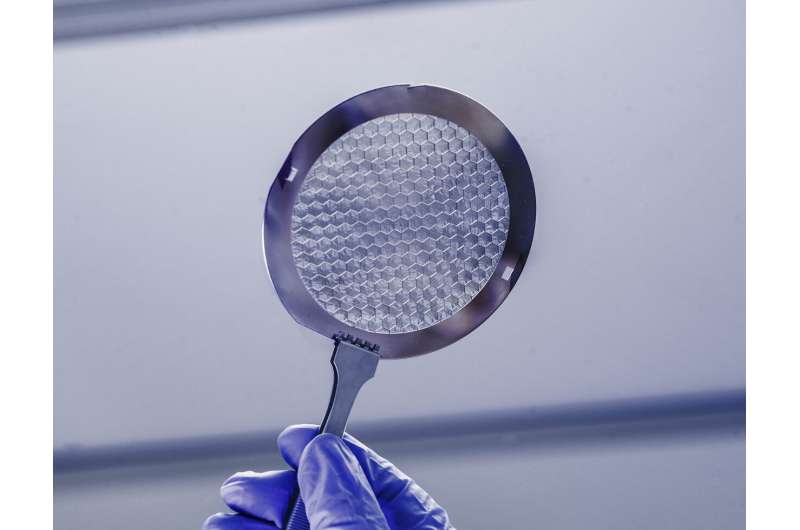This article has been reviewed according to Science X's editorial process and policies. Editors have highlighted the following attributes while ensuring the content's credibility:
fact-checked
peer-reviewed publication
trusted source
proofread
NASA engineers push limits of physics to focus light

A pair of precision-orbiting small satellites will attempt to capture the first views ever of small-scale features near the surface of the sun that scientists believe drive the heating and acceleration of solar wind.
Heliophysicist Dr. Doug Rabin at NASA's Goddard Space Flight Center in Greenbelt, Maryland, said photon sieves, a technology that can focus extreme ultraviolet light, should be able to resolve features 10 to 50 times smaller than what can be seen today with the Solar Dynamics Observatory's EUV imager.
To be most effective, however, they must be wide, super-thin, and etched with precise holes to refract light. Working in Goddard's Detector Development Laboratory, Goddard engineer Kevin Denis developed new ways to create wider and thinner membranes from wafers of silicon and niobium.
Each advancement so far has required additional steps to protect the resulting sieves, such as leaving a honeycomb of thicker material to support the membrane and prevent tearing. "It's a sheer physical challenge to construct sieves with such precision," said Goddard Heliophysicist Dr. Doug Rabin. "Their smallest features are a 2-microns across with a 2-micron gap between perforations, that's about the size of most bacteria."
Etched from the center with ever smaller rings of holes, sieves are built to refract light similarly to Fresnel lenses used in lighthouses. Extreme ultraviolet light passing through this sieve is bent gradually inward to a distant camera. Thin membranes matter for solar science because these sieves transmit more light than thicker materials, Denis said.
He and fellow engineer Kelly Johnson successfully produced a 3-inch (8-cm) diameter silicon sieve, a mere 100 nanometers thick. Now, they are experimenting with niobium membranes, which can further improve light-gathering efficiency because they transmit up to seven times more light than silicon. They have successfully etched a 5-inch (13 cm) diameter niobium sieve just 200 nanometers thick.
Denis takes inspiration from working closely with scientists to overcome barriers to advancing their field, he said. "They have done a great job using the sieves in near-term science applications while we push the technology for larger and more capable missions."
Photon sieves cut from materials as thick as 25 microns are already part of the technology demonstration VISORS—Virtual Super Optics Reconfigurable Swarm—CubeSat mission, expected to launch in 2024. VISORS consists of one compact satellite about the size of a briefcase outfitted with sieves to refract light onto a receiver on a second satellite 130 feet (40 m) away.
Maintaining these spacecraft's high-precision orbit and developing a sunshade are the focus of other Goddard IRAD projects. VISOR's success could pave the way for a larger future mission, with spacecraft separation measured in kilometers, employing the greater resolution of Denis's thinner sieves once they are ready for spaceflight. Another larger photon sieve will be used to calibrate the MUSE—Multi-slit Solar Explorer—spectrometer expected to launch in 2027.
Denis's work was highlighted in Physics Today, and has resulted in two patents already, with a third submitted. Goddard Chief Technologist Peter Hughes awarded Denis the FY23 IRAD Innovator of the Year Award during the program's annual poster session held Nov. 15.
While he continues to push the limits of engineering, Denis said he is looking forward to the MUSE and VISORS launches. "It's a great motivation to see how they are going to be used for new science even as we continue to improve."
More information: Holly Gilbert, Advances in solar telescopes, Physics Today (2023). DOI: 10.1063/PT.3.5292
Journal information: Physics Today
Provided by NASA's Goddard Space Flight Center





















